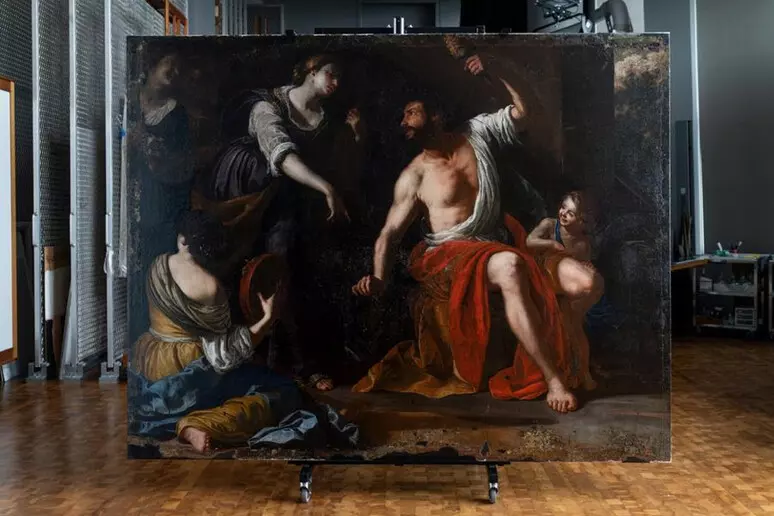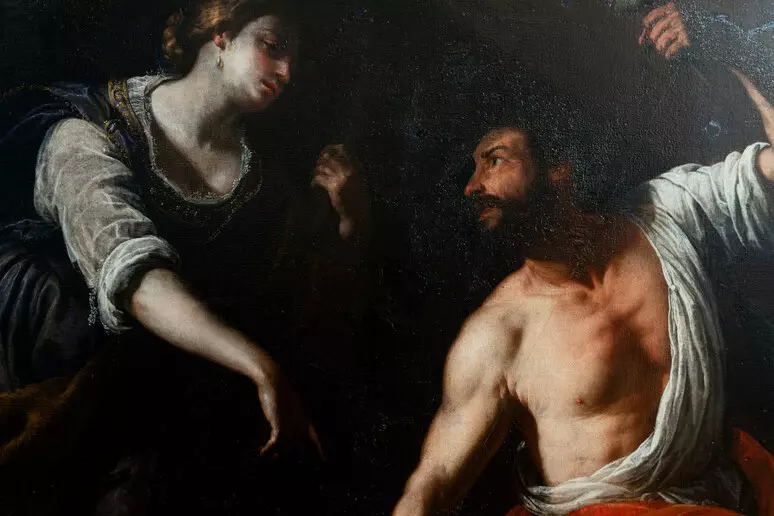From June 10 to Sept. 14, the Getty Museum in Los Angeles will host the exhibition “Artemisia’s Strong Women: Rescuing a Masterpiece,” organized to celebrate the completion of the complex restoration of a rarely seen work by Baroque painter Artemisia Gentileschi. According to experts, the painting, Hercules and Omphale, was created in the 1630s in Naples, where Artemisia had relocated and continued to live until her death in 1656.
The painting had been badly damaged during the August 2020 Beirut port explosion, which claimed more than 200 lives and also affected the historic Sursock Palace, where the canvas was kept. Torn, punctured, and ravaged by debris, the painting arrived at the Getty in 2022 to undergo a challenging conservation operation.
“In my more than 30-year career as a painting restorer, this is some of the most severe damage I’ve ever seen and was one of the most difficult, but also one of the most rewarding projects I’ve worked on,” says Ulrich Birkmaier, chief conservator at the Getty Museum, who collaborated with fellow Roman Matteo Rossi Doria on the restoration.

The work involved removing old layers of varnish and previous restorations, bringing back the painting’s original palette and reconstructing some portions of the painting that had been lost.
“The discovery of Gentileschi’s Hercules and Omphale in Beirut was a momentous event for art historians around the world,” says Timothy Potts, director of the Getty Museum. “We are grateful to the Sursock Palace for entrusting us with the task of restoring this masterpiece to its former glory and displaying it in our galleries alongside other depictions of strong women signed by Gentileschi.”
After Los Angeles, the canvas will be displayed at the Columbus Museum of Art, Ohio, where it will remain through the spring season. It will then go back to the Getty as a long-term loan before returning permanently to the Sursock Palace in Beirut.












